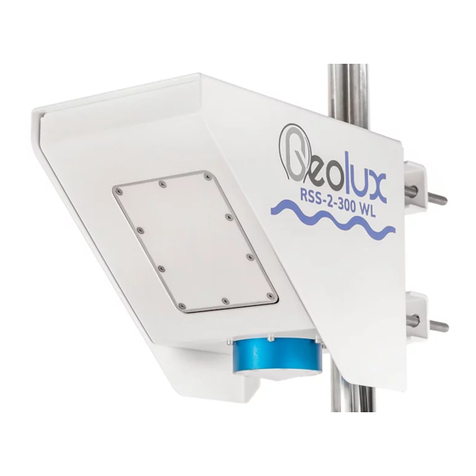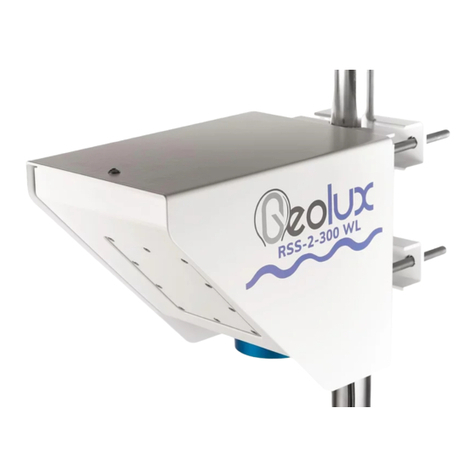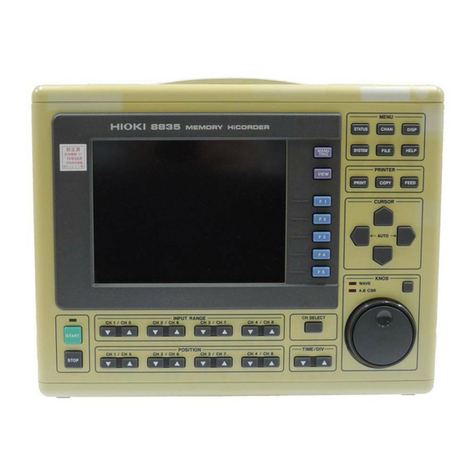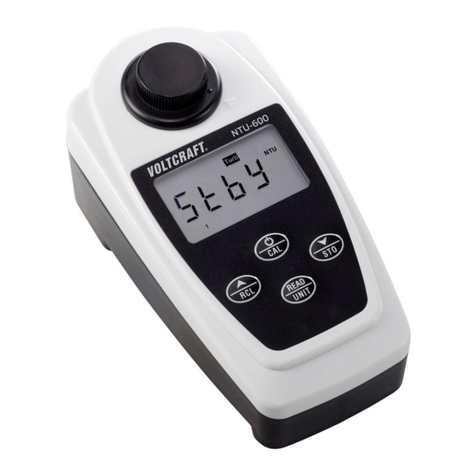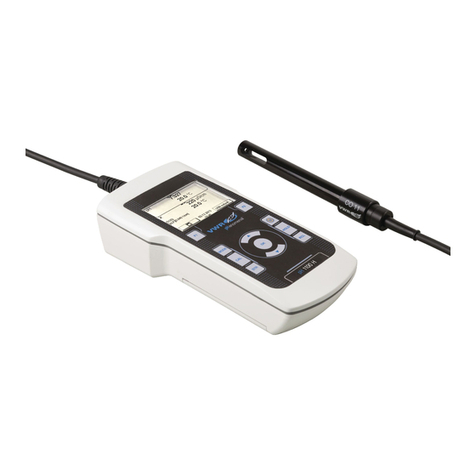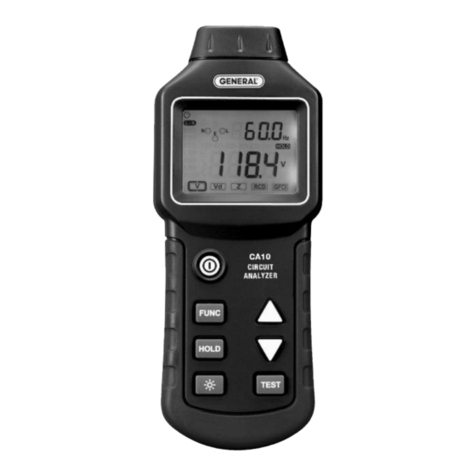Geolux RSS-2-300 W User manual

Copyright ©2020 Geolux d.o.o. All rights reserved.
GLX-RSS-2-300 W
Non-Contact Flow Meter
User Manual

GLX-RSS-2-300 W User Manual
Page 2 of 28

GLX-RSS-2-300 W User Manual
Page 3 of 28
Starting Point
Thank you for purchasing Geolux RSS-2-300 W non-contact open channel flow
meter! We have put together the experience of our engineers, the domain knowledge of
our customers, the enthusiasm of our team, and the manufacturing excellence to deliver
this product to you.
You may freely rely on our field-proven radar technology. The use of top-quality
components and advanced signal processing algorithms ensures that Geolux flow meter
can be used in various applications and environments.
Although we are certain that you are more than capable of connecting the Flow
Meter to your system, we have created this User Manual to assist you in setting up and
using Geolux flow meter device.
Should there be any questions left unanswered, please feel free to contact us
directly:
Geolux d.o.o.
Ljudevita Gaja 62
10430 Samobor
Croatia
E-mail: [email protected]
Web: www.geolux.hr

GLX-RSS-2-300 W User Manual
Page 4 of 28
1. Introduction
Geolux RSS-2-300 W flow meter uses radar technology to provide precise
contactless measurement of surface flow velocity. Contactless radar technology enables
quick and simple sensor installation above the water surface, and requires minimum
maintenance. This functionality is achieved by transmitting an electromagnetic wave in
24 GHz frequency range (K-band), and measuring the frequency shift of the
electromagnetic wave reflected from the flowing water surface. The frequency shift is
caused by the Doppler effect of the moving surface on the electromagnetic wave. As
the relative speed between the radar sensor and the water surface increases, the
detected frequency shift also increases, thus enabling the flow meter to precisely
determine the surface flow velocity.
The flow meter is able to detect water flow traveling at speeds ranging from 0,02
m/s to 15,0 m/s with precision of 0,01 m/s. Integrated tilt sensor measures inclination
angle of the sensor and the flow velocity measurement is automatically cosine-corrected
according to the measured mounting tilt angle.

GLX-RSS-2-300 W User Manual
Page 5 of 28
2. Electrical Characteristics
The electrical characteristics of the Geolux RSS-2-300 W flow meter are given in
the Table 1.
Table 1. Electrical characteristics
P a r a m e t e r
M I N
T Y P
M A X
U n i t
Communication interface:
RS-232 interface speed
RS-485 interface speed
1200
1200
115200
115200
bps
bps
Radar Sensor
Frequency
Radiated power (EIRP)
Sensitivity
Beam-width (3dB) –Azimuth
Beam-width (3dB) –Elevation
Measurement range
Resolution
Accuracy
Installation height above the water
24.075
-108
0,02
0,01
24.125
-110
12
24
1
24.175
20
-112
15,0
15
GHz
dBm
dBm
°
°
m/s
m/s
%
m
Power supply voltage
9,0
12,0
27,0
V
Power
Operational mode
Sleep mode
950
85
mW
mW
Alarm output maximal current
60
mA
Alarm output maximal voltage
30
VDC
Analog output maximal voltage
30
VDC
Operational temperature range
-40
+85
°C
Measurement range
0,02
15,00
m/s
Resolution
0,001
m/s
Accuracy
1
%
Angle compensation
0
30
75
deg.
Installation height above the water
0,1
20
m
Sample rate
10
sps
Ingress Protection Rating
IP68
Mechanical
110x90x50
mm

GLX-RSS-2-300 W User Manual
Page 6 of 28
3. Connector Pin-Out
The flow meter uses robust IP66 circular M12 connector with 12 positions and the
mating cable is also delivered with the flow meter. The connector and cable details are
shown on Picture 1. The Table 2 gives detailed description for each pin.
Picture 1. Flow meter connectors
Table 2. Connector and cable pin-out
P i n
N o .
W i r e C ol o r
P i n N a m e
P i n D e s c ri p t io n
1
White
GND
This pin should be connected to the ground (negative)
pole of the power supply
2
Brown
+Vin
The power supply for the Radar Speed Sensor is
provided on this pin. The Radar Speed Sensor power
supply voltage must be in the range 9 VDC to 22
VDC, and the power supply must be able to provide at
last 0,65W
3
Green
RS232 –TxD
RS-232 data transmit signal
4
Yellow
RS232 –RxD
RS-232 data receive signal
5
Grey
GND
Signal ground
6
Pink
CAN –H
CAN2.0B high signal
(optional)
7
Blue
CAN –L
CAN2.0B low signal
(optional)
8
Red
Reserved
Reserved
9
Orange
RS485 –D-
RS-485 data transmitter/receiver low signal
10
Dark Red
RS485 –D+
RS-485 data transmitter/receiver high signal
11
Black
Alarm SW
Alarm - open collector switch signal max. 60mA
(optional)
12
Purple
4 –20 mA
Sink for 4 –20 mA analog interface. Connect sensing
device as pull-up to sink the current

GLX-RSS-2-300 W User Manual
Page 7 of 28
3.1. Serial RS-232 interface
Serial RS-232 interface is implemented as standard PC full-duplex serial interface
with voltage levels adequate for direct connection to PC computer or other embedded
device used for serial RS-232 communication.
In case RS-232 interface is connected to standard DB-9 PC connector, TxD line
(green wire) is connected to pin 2 and RxD (yellow wire) is connected to pin 3. For
proper operation of serial interface additional connection of signal GND (grey wire) is
required on pin 5 of the DB-9 connector.
Optionally Geolux can supply cable with DB-9 connector connected to the cable
but this must be specified as option on order of the sensors.
Several communication protocols are available, and custom on request. Details of
communication protocols are described later in this manual.
3.2. Serial RS-485 interface
Serial RS-485 interface is implemented as standard industrial half-duplex
communication interface. Communication interface is short-circuit and overvoltage
internally protected. Depending on the receiving device interface can be used with only
two wires (D+ dark red wire & D- orange wire) or in some cases ground connection
(signal GND gray wire) is also required. For more details please consult receiver
specification.
Most common communication protocol used with RS-485 interface is Modbus-
RTU but other protocols are also available. Details of communication protocols are
described later in this manual.

GLX-RSS-2-300 W User Manual
Page 8 of 28
3.3. Analog 4 –20 mA output
Analog current 4 –20 mA output is provided for easier compatibility with older
logging and control systems. Output is implemented as current sink architecture with
common ground. Maximal voltage applied to the sink can go up to 30 VDC providing
greater flexibility in connection of the sensor to PLCs, loggers, or data concentrators.
Signal range and function for 4 –20 mA analog output can be configured in setup
application so the sensor will be able to signal best suitable value range with available
current range. Current step in the sensor is 0,3 µA limiting resolution possible for the
value signaling and care has to be taken in the setup of minimal value to be represented
by 4 mA and maximal value to be represented by 20 mA so the resolution is sufficient
for the system requirements.

GLX-RSS-2-300 W User Manual
Page 9 of 28
4. Installing Flow Meter
The flow meter must be installed above the water surface, pointing toward the
water surface at a vertical angle. Recommended minimum height above the water
surface is 1 meter, with maximum height up to 20 meters. Recommended vertical angle
is 45 degrees.
Picture 2 shows how the radar should be positioned relative to the water surface.
Picture 2. Installing flow meter
4.1. Instrument mounting and location selection
To achieve the specified accuracy, it is important to properly select measurement
site and to install sensor with proper horizontal and vertical tilt angle. The tilt angle to
horizontal plane for surface velocity sensor should be between 30° and 60°, and if
instrument is mounted with reasonable tolerances to the pole this should be maintained.
The instrument should be oriented in parallel with the water flow direction. For optimal
operation, and best results. Any deviation from parallel water flow direction will
introduce offset of the real measurement value, more precise value will be lower than
actual surface velocity of the water. It is recommended that the instrument is pointed
upstream, so that the water flows towards the instrument.

GLX-RSS-2-300 W User Manual
Page 10 of 28
The height of the instrument above the water surface and the inclination
determine area on the surface that is covered by the radar beam. This measurement
area should be clear of any obstacles. The structure holding the instrument (pole, bridge
fence, etc.) must be solid and without vibrations. There should be no vegetation
between the radar and the measurement area because it could affect measurement
accuracy.
Water surface direct below the sensor should be clean of vegetation, rocks, sand
deposition or other obstacles that could affect measurement.
Surface velocity radar beam will cover an elliptical area on the water surface.
The radar reports average surface velocity of the covered area and instrument uses
complex Kalman filters with physical modelling of the water flow to give stable
measurements even under turbulent conditions. However even the moderate waviness of
the water surface will improve the measurement, if the water flow is strongly turbulent,
fluctuations in measured data could be expected as well as somewhat reduced
measurement accuracy. If strongly turbulent flow can be expected at monitoring site,
then the filter length of the radar should be configured to 120 or more.
4.2. Measurement quality indicator
Geolux RSS-2-300W instrument is constantly calculating various parameters of the
signal in the signal processing algorithms and will continuously with measurement data
report also measurement quality. Quality indicator value is in range from 0 (the best
quality) to 3 (the worst quality) and can be used to interpret data in the analysis
software with better understanding and confidence.
For example, when radar is mounted on the railway bridge, one of common
applications, measurements will be very good quality most of the time except when train
is passing the bridge due to the extensive vibrations. In this case radar will still report
measurements but values could be quite wrong, but also measurement quality indicator
value will go up to the higher value. It is up to every user to interpret quality indicator
value for their application, but general recommendation is that measurements with
quality indicator 3 cannot be trusted, value 2 could be questionable and values 1 and 0
are very good and accurate.
4.3. Rain and wind
Geolux RSS-2-300WL instrument have integrated internal software filters to
filter out effects of rain, fog or wind both for surface velocity and for radar distance
sensor. These filters however have some limitations. Majority of measurement
inaccuracies caused by environmental factors can be solved by proper sensor installation.
For rain and snow suppression, the most effective solution is to mount the radar so that
it points upstream and the water flows towards the radar. As rain falls down and the
radar is tilted downwards, rain droplets will move away from the radar, while the water
flows towards the radar. The radar can then easily distinguish the water movement

GLX-RSS-2-300 W User Manual
Page 11 of 28
from rain movement. To further improve rain filtering, the radar should be configured to
report only incoming direction of water flow. In this case, the radar will completely
ignore all movement with direction going away from the sensor.
Influence of the wind on the accuracy of measured data is, in most cases small
and can be neglected. The only exception is strong wind as it will create surface waves
that are traveling in different direction from the water flow. This can affect surface
measurement accuracy.
4.4. Interference and multiple radars
Surface velocity radar operates in K band, in frequency range around 24.125
GHz. Frequency stability and phase noise of the internal oscillator is very good and
always trimmed in factory to precise central frequency but even with the best possible
trimming and most stable oscillators it is very unlikely that two devices will be working
on the exact same frequency to cause interference. Doppler frequency shift caused by
water in speed range up to 15 m/s is measured in kHz frequency shift. As this frequency
shift is relatively small in comparison to the central frequency, in most cases below
0,00005%, it will be required to keep difference between central frequencies of two
radars in the same range to get interference.
Similarly, as interference from two or more surface velocity radars on the same
location it is very unlikely that other radiation sources in K band will affect radar
measurements also. It is possible that some wideband radiation sources can introduce
small and impulse interference for the short period of time, but this should not, or it is
very unlikely to affect measurements reported by radar sensor continuously.
4.5. Fogging and evaporation
Generally, radar sensors are not affected by fog or evaporation of water unless
very heavy evaporation is present and water density in the air is very high. Very high
amount of evaporation can introduce reflections and can affect measurement on surface
velocity sensor. In the case of evaporation, the best solution for surface velocity sensor
problem solving is to use outbound flow direction and to configure sensor with only
downstream directional filter. As evaporation is traveling upwards from the water
surface, inbound or approaching to the radar, directional filter will solve the problem in
most of the cases.
4.6. Reflections
Water is very reflective medium for the radar waves and most of the power
transmitted from radar transmitter will be reflected from the water surface. Reflections
of the radar transmitted power beam follow the same physical laws as in optics and
every time radar beam hits the surface part of the power is reflected away from the

GLX-RSS-2-300 W User Manual
Page 12 of 28
radar, part of the power is reflected towards the radar and only a small part of power is
absorbed by the water. Depending on the surface roughness and incident angle ratio
between power reflected in the direction away from the radar and direction back
towards the radar can significantly vary.
Ratio between reflections is determined by water surface roughness and rule of
thumb can be applied where more rough water surface will lead to stronger reflection
inbound the radar thus easier detection and greater SNR (signal to noise) ration on the
radar which enables more accurate measurement. Geolux surface velocity radar is
designed with special techniques to achieve accurate measurements even in the very
small SNR environments so the required surface roughness of 1mm is usually enough for
the precise measurements.
When selecting location for surface velocity sensor additional care must be taken
to avoid reflected power away from the radar (red arrow) to hit moving objects (gray
cloud) on the side of water channel as this can cause additional reflection to inbound
the radar and can significantly affect measurement accuracy. Installations where
pedestrians, cars or other objects are moving in front of the sensor closer than 75 m
should be avoided as it is proven in practice that it can cause problems.
Indoor applications are generally not recommended as it could lead to wrong
readings due to the reflection of the radar beam and hitting any moving or rotating
object which could cause false readings.

GLX-RSS-2-300 W User Manual
Page 13 of 28
5. Data Interface
Geolux RSS-2-300 W flow meter offers multiple data interfaces, in order to make
the integration of the device with existing SCADA/telemetry systems easy.
5.1. Serial RS-232 interface
Serial RS-232 interface is used for direct connection of a single flow meter unit
with the computer. The serial interface is used both for retrieving live flow
measurements and for configuration of the flow meter device. Geolux provides PC
application for unit configuration and flow monitoring free of charge.
Default communication parameters are: Bitrate: 9600 bps, data bits: 8, stop bits: 1,
parity: none
A NMEA-like communication protocol is used to deliver flow measurements over
RS-232 interface. Detailed description of the protocol is given in the Chapter 6 of the
User Manual.
5.2. Serial RS-485 interface
Serial RS-485 interface is used for connecting multiple flow meters to a single
data logger. RS-485 interface uses a different protocol then the protocol used over RS-
232 interface, in order to allow multiple flow meters connected on a single RS-485 bus.
The main difference from the protocol used over RS-232 interface is that the flow
measurements are not reported automatically, but are instead reported only after being
requested by the master device (data logger unit). Detailed description of the protocol
is given in the Chapter 6 of this User manual.
Default communication parameters are: Bitrate: 9600 bps, data bits: 8, stop bits: 1,
parity: none

GLX-RSS-2-300 W User Manual
Page 14 of 28
6. Data Protocols
Geolux GLX-RSS-2-300 W flow meter supports the following data protocols:
•NMEA-like protocol on RS-232 interface that constantly outputs the
detected speed and reflected signal power, and also the current measured
tilt angle
•Servicing protocol on RS-232 interface for configuring the unit
•Request-response protocol on RS-485 interface that allows multiple units
to be used on a single RS-485 bus
•Modbus-RTU protocol on RS-485 interface which is supported by variety
of third-party data loggers
Support for additional protocols is available upon customer request.
6.1. NMEA protocol (RS-232)
NMEA protocol is based on the standard protocol family widely used by the
navigation equipment. NMEA protocol is sentence oriented, and is capable of sending
multiple sentences with different information. The sentence content is designated by the
starting keyword which is different for each sentence type. NMEA sentences are
terminated with the checksum which makes this protocol extremely reliable. NMEA
protocol is singe-direction protocol: data is only transmitted from the flow meter.
At RS-232 interface the device periodically outputs following data sentences:
Direct flow measurement report
$RDTGT,D1,S1,L1*CSUM<CR><LF>
$RDTGT
: The keyword sent on the beginning of each detection report. This sentence is
sent whenever there is detected flow.
D1
: The detected flow direction (1 approaching, -1 receding).
S1
: The detected flow speed (speed is reported as speed*10 for m/s, km/h, mph,
fps, fpm and as speed*1 for mm/s).
L1
: The detected level of the signal reflection from the water surface.
CSUM
: The check sum of the characters in the report from $to *excluding these
characters.
Average flow measurement report
$RDAVG,S1*CSUM<CR><LF>
$RDAVG
: The keyword sent on the beginning of the report. This sentence reports
smoothed flow measurement. This is the preferred reading, since it filters out
minor fluctuations in flow speed reading due to waves.
S1
: The detected flow speed (speed is reported as speed*10 for m/s, km/h, mph,
fps, fpm and as speed*1 for mm/s).
CSUM
: The check sum of the characters in the report from $to *excluding these
characters.

GLX-RSS-2-300 W User Manual
Page 15 of 28
Tilt angle report
$RDANG,A*CSUM<CR><LF>
$RDANG
: The keyword sent on the beginning of each angle report.
A
: The measured tilt angle, in degrees, 0 being horizontal.
CSUM
: The check sum of the characters in the report from $to *excluding these
characters.
Signal SNR report
$RDSNR,S1,S2*CSUM<CR><LF>
$RDSNR
: The keyword sent on the beginning of each SNR report.
S1
: The current SNR of measured velocity signal in dBm.
S2
: The average SNR of measured velocity signal in dBm.
CSUM
: The check sum of the characters in the report from $to *excluding these
characters.
Quality of signal report
$QOS,Q1,Q2*CSUM<CR><LF>
$QOS
: The keyword sent on the beginning of each quality of signal report.
Q1
: Quality of signal estimate based on sensor vibration.
Q2
: Quality of signal estimate signal quality.
CSUM
: The check sum of the characters in the report from $to *excluding these
characters.
Quality of signal factor:
0 –Excellent measurement quality
1 –Good measurement quality
2 –Low measurement quality
3 –Unacceptable measurement quality
6.2. Servicing protocol (RS-232)
The servicing protocol is used to retrieve and modify device operating
parameters. Various device settings, such as unit system and filtering parameters are
configured using this protocol. Since NMEA protocol is one way (it only outputs the
data), the servicing protocol is always active.
To make radar configuration easy, Geolux provides a Configurator utility
application. Regular users do not need to be concerned about the servicing protocol
used between the Configurator utility and the flow meter device. The Configurator
utility is described in the Chapter 7 of this manual.

GLX-RSS-2-300 W User Manual
Page 16 of 28
The servicing protocol listens on RS-232 serial port for incoming requests, and
on each received request, it will answer back.
The following requests are recognized by the servicing protocol and every
command should be followed by <CL>, <LF> or <CR><LF> (enter):
Change velocity units type
#set_units=kmh
#set_units=mph
#set_units=fps
#set_units=fpm
#set_units=ms
#set_units=mms
Sets the units type in which the velocity is reported.
Change radar sensitivity
#set_thld=<0-100>
Changes the sensitivity of the radar sensor.
Change SNR threshold
#set_thld_snr=<0-5120>
Changes the minimum threshold SNR. It is set as value in dBm * 256. If the current SNR is
below the defined threshold, the instrument will not report any velocity and will assume there is no
water movement.
Change detected targets direction
#set_direction=in
#set_direction=out
#set_direction=both
Changes the parameter that specifies which flow direction will be reported.
Change serial port baud rate
#set_baud_rate=9600
#set_baud_rate=19200
#set_baud_rate=38400
#set_baud_rate=57600
#set_baud_rate=115200
Changes the parameter that specifies the baud rate speed used by serial communication line;
the same value is used for both RS-232 and RS-485.
Change RS485 protocol
#set_485_proto=modbus_rtu
#set_485_proto=hs

GLX-RSS-2-300 W User Manual
Page 17 of 28
#set_485_proto=geolux
Changes the parameter that specifies the protocol on RS-485.
Change filter length
#set_filter_len=<1-1000>
Changes the window length (in samples) for moving average filter.
Set device ID
#set_can_id=<0-99>
Configure the device ID. The ID is used as device identifier for RS-485 protocol.
Set output type for 4-20mA
#set_420_type=none
#set_420_type=velocity
Configure the 4-20mA output type.
Set output value for 4-20mA
#set_420_min=<value>
#set_420_max=<value>
Configure the 4-20mA output minimum value for 4mA and maximum value for 20mA. Value
is set for currently configured unit. Value number is accepted as float.
Set dead time
#set_dead_time=<3-100>
Configure dead time in seconds which ensures no signals will be taken in consideration after
power up.
Sleep mode/power save
#set_power_save=1 (go to power save)
#set_power_save=0 (left power save)
Command for entering power save mode in which power consumption lowers significantly
and is use for battery save management.

GLX-RSS-2-300 W User Manual
Page 18 of 28
Retrieve current device status
#get_info
Requests the current device status. Here is an example status output:
# firmware:6.2.1
# serial:222312
# sensor_type:W
# direction:both
# baud_rate:9600
# dead_time:6
# can_id:1
# angle:89
# filter_len:50
# pga_gain:200
# proto:nmea
# 485_proto:modbus_rtu
# units: mms
# sensitivity:8 (Auto)
# thld:124
# thld_snr:1024
# an420_type:9
# an420_min:0
# an420_max:10000
# level_sensor:0
6.3. Request-response protocol (RS-485)
A different data protocol is used on RS-485 interface which allows connection of
multiple units on the single RS-485 line. Before the units are connected on the single
RS-485 bus, each unit must be configured with a different device identifier. The device
identifier is configured by using the PC application. Please check Chapter 7 for
instructions.
The request-response protocol, unlike NMEA protocol, does not automatically
report periodic flow measurement readings. Instead, when the unit is polled form the
data logger, it responds the measurement.
6.3.1. HS protocol
The request is sent from the data logger to the flow meter:
<0x25> ID CSUM

GLX-RSS-2-300 W User Manual
Page 19 of 28
0x25
: The first byte sent in the request is ‘%’character. Its ASCII value in HEX is 0x25.
ID:
Exactly two bytes long. This is the unit ID written as two ASCII characters. For
example, if the polled unit ID is 2, then ID will be sent as “02”. In HEX representation
it is the following two bytes: <0x30><0x32>.
CSUM:
Checksum, calculated by adding in modulo 256 the two byte values of the ID. If the
device ID is 2, then ID was sent as <0x30><0x32>. Checksum is then 0x30+0x32 =
<0x62>.
After receiving the request, if the device ID matches, the flow meter will respond
with the current averaged flow velocity reading:
<0xA5> ID SPEED CSUM
0xA5
: The first byte sent in the response is byte with HEX value of 0xA5.
ID:
Exactly two bytes long. This is the unit ID written as two ASCII characters. For
example, if the unit ID is 2, then ID will be sent as “02”. In HEX representation it is
the following two bytes: <0x30><0x32>.
SPEED
: The speed readout in currently selected units, formatted as real (float) number with
exactly three digits after the decimal dot separator. For example, if the current
averaged speed is 5.7143, it will be reported as 5.714, or in HEX values:
<0x35><0x2E><0x37><0x31><0x34><0x33>.
CSUM:
Checksum, calculated by adding in modulo 256 the two byte values of the ID and all
byte values from the SPEED.
Second possible command is send from the data logger to the flow meter:
<0x2b> ID CSUM
0x2b
: The first byte sent in the request is ‘+‘character. Its ASCII value in HEX is 0x25.
ID:
Exactly two bytes long. This is the unit ID written as two ASCII characters. For
example, if the polled unit ID is 2, then ID will be sent as “02”. In HEX representation
it is the following two bytes: <0x30><0x32>.
CSUM:
Checksum, calculated by adding in modulo 256 the two byte values of the ID. If the
device ID is 2, then ID was sent as <0x30><0x32>. Checksum is then 0x30+0x32 =
<0x62>.
After receiving the request, device goes to power safe mode
Third possible command is send from the data logger to the flow meter:
<0x2d> ID CSUM
0x2d
: The first byte sent in the request is ‘-‘character. Its ASCII value in HEX is 0x25.
ID:
Exactly two bytes long. This is the unit ID written as two ASCII characters. For
example, if the polled unit ID is 2, then ID will be sent as “02”. In HEX representation
it is the following two bytes: <0x30><0x32>.
CSUM:
Checksum, calculated by adding in modulo 256 the two byte values of the ID. If the
device ID is 2, then ID was sent as <0x30><0x32>. Checksum is then 0x30+0x32 =
<0x62>.
After receiving the request, device goes to normal operation mode from power safe
mode.

GLX-RSS-2-300 W User Manual
Page 20 of 28
6.3.2. Geolux protocol
The request is sent from the data logger to the flow meter:
<0x25> ID CSUM
0x25
: The first byte sent in the request is ‘%’character. Its ASCII value in HEX is 0x25.
ID:
Exactly two bytes long. This is the unit ID written as two ASCII characters. For
example, if the polled unit ID is 2, then ID will be sent as “02”. In HEX representation
it is the following two bytes: <0x30><0x32>.
CSUM:
Checksum, calculated by adding in modulo 256 the two byte values of the ID. If the
device ID is 2, then ID was sent as <0x30><0x32>. Checksum is then 0x30+0x32 =
<0x62>.
After receiving the request, if the device ID matches, the flow meter will respond
with the current averaged flow velocity reading:
<0xA5> ID#CSPEED#ASPEED#CDIR#SIGLEVEL#ANGLE#0#0$ CSUM
0xA5
: The first byte sent in the response is byte with HEX value of 0xA5.
ID:
Exactly two bytes long. This is the unit ID written as two ASCII characters.
For example, if the unit ID is 2, then ID will be sent as “02”. In HEX
representation it is the following two bytes: <0x30><0x32>.
CSPEED
: The speed readout of current speed in currently selected units, formatted as
real (float) number with exactly three digits after the decimal dot separator.
For example, if the current speed is 5.7143, it will be reported as 5.714.
ASPEED: The speed readout of averaged speed in currently selected units, formatted
same as current speed.
CDIR: -1 for outgoing, and 1 for incoming flow.
SIGLEVEL: The detected level of the signal reflection from the water surface.
ANGLE The measured tilt angle, in degrees, 0 being horizontal.
CSUM:
Checksum, calculated by adding in modulo 256 the two byte values of the all
byte values first byte.
6.4. Modbus Protocol (RS-485)
When configured in Modbus operation mode, the unit responds to Modbus
requests over RS-485 dana line. The baud rate id configured through the PC
application, and 1 stop bit, even parity, 8 dana bits configuration is used.
Modbus registers that are accessed by Modbus protocol are 16-bit (2-byte)
registers. Any number of registers can be read or written over Modbus.
Modbus is a request-response protocol where a master (such as datalogger) sends
out requests, and slave devices (such as RSS-2-300 W sensor) responds. The request
and response format, with example is given in tables 3-6.
Table of contents
Other Geolux Measuring Instrument manuals
Popular Measuring Instrument manuals by other brands
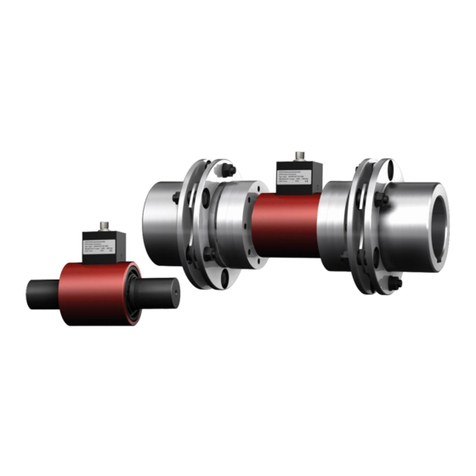
KTR-Group
KTR-Group DATAFLEX 42/1000 Operating & assembly instructions

Siargo
Siargo FS5001L user manual
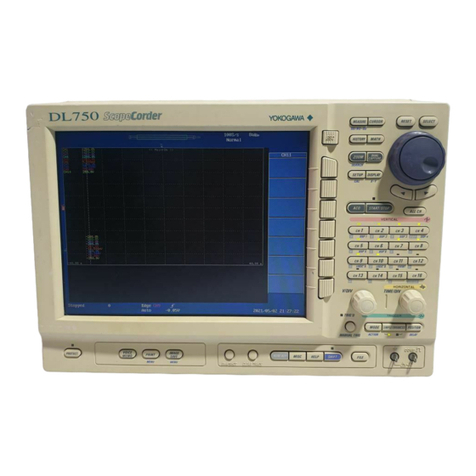
YOKOGAWA
YOKOGAWA ScopeCorder DL750 user manual
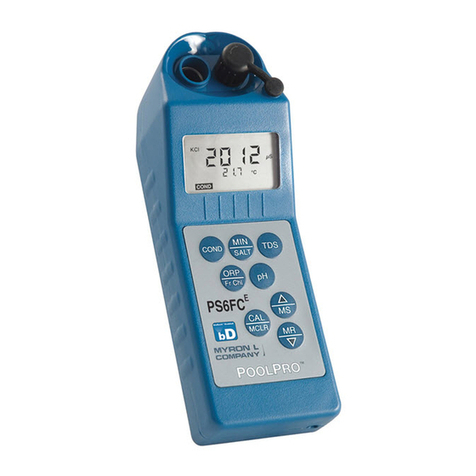
Myron L
Myron L PoolPro PS6FCE quick start guide
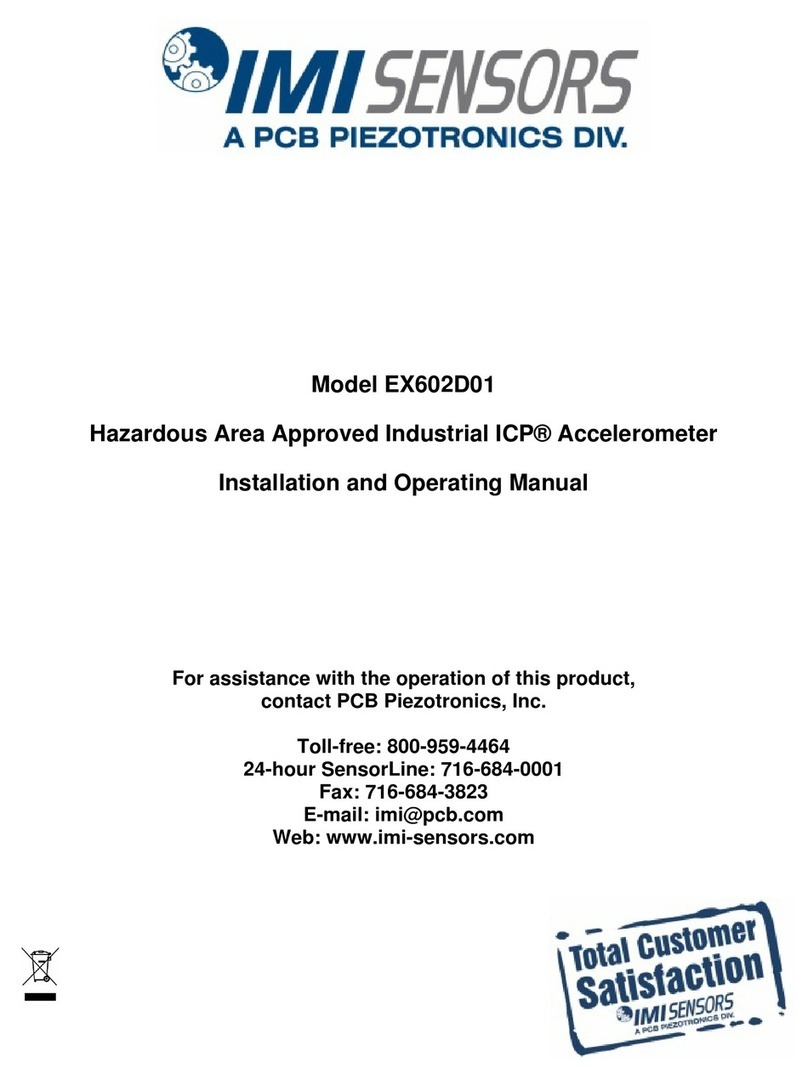
PCB Piezotronics
PCB Piezotronics IMI SENSORS EX602D01 Installation and operating manual
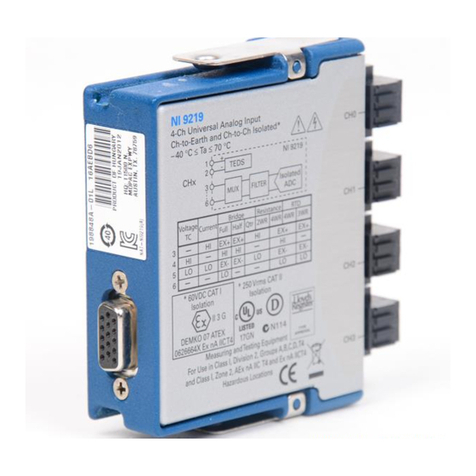
National Instruments
National Instruments 9219 CALIBRATION PROCEDURE
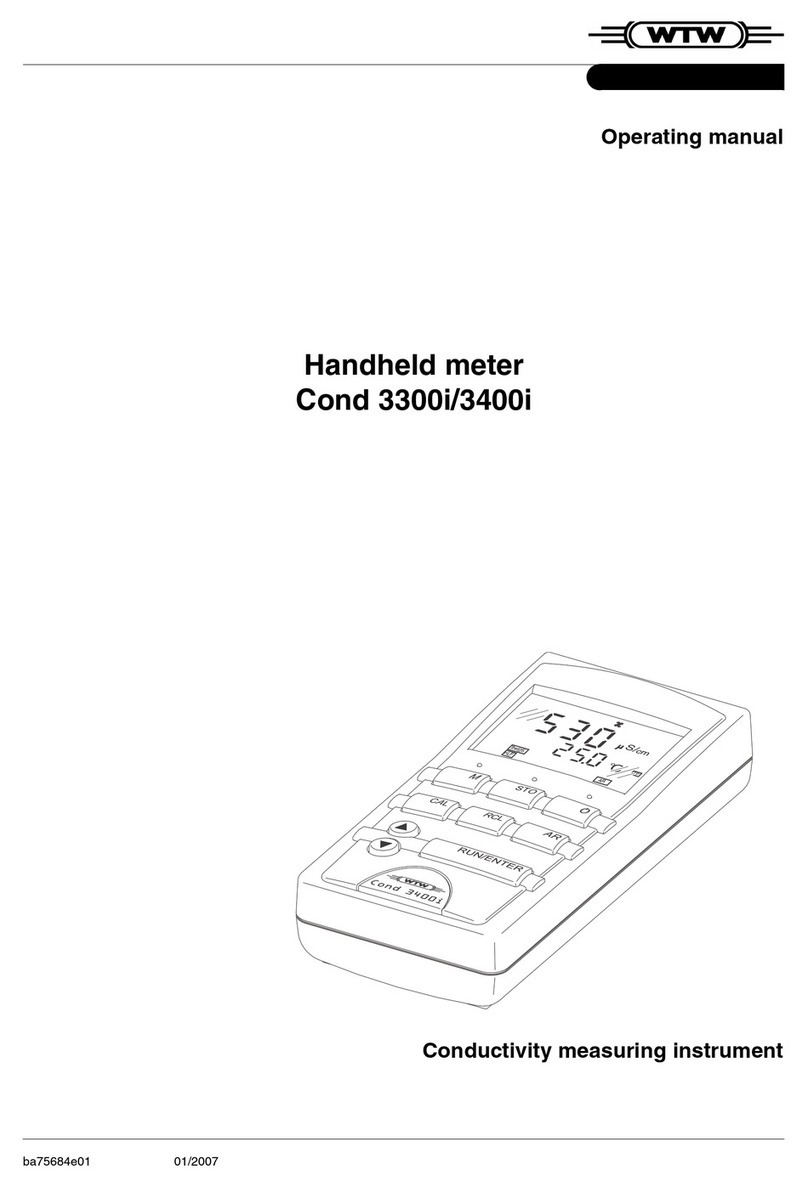
wtw
wtw Cond 3300i operating manual
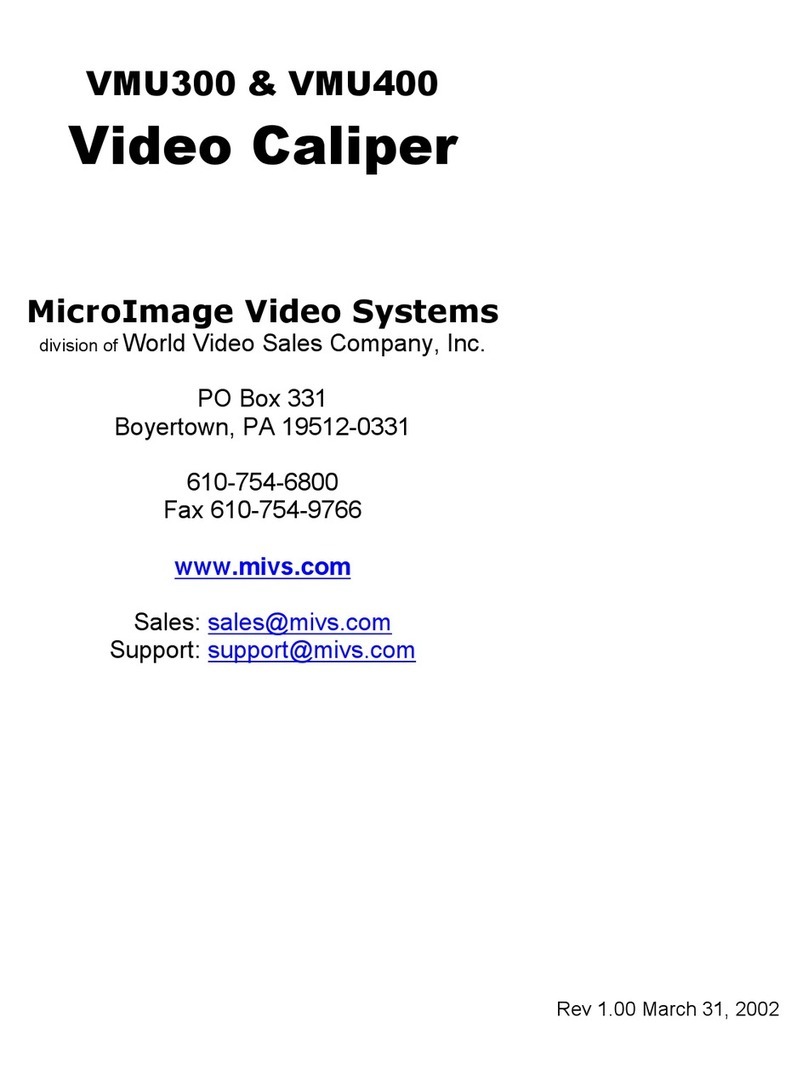
MicroImage Video Systems
MicroImage Video Systems VMU300 manual

LOVATO ELECTRIC
LOVATO ELECTRIC DMG300 installation manual
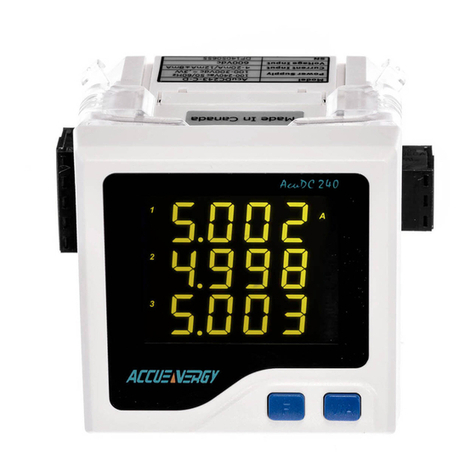
AccuEnergy
AccuEnergy AcuDC 240 Series user manual

PCB Piezotronics
PCB Piezotronics 356B07 Installation and operating manual
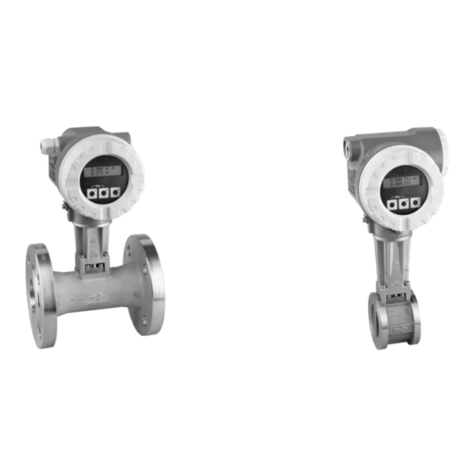
Endress+Hauser
Endress+Hauser Proline Prowirl 72F manual
